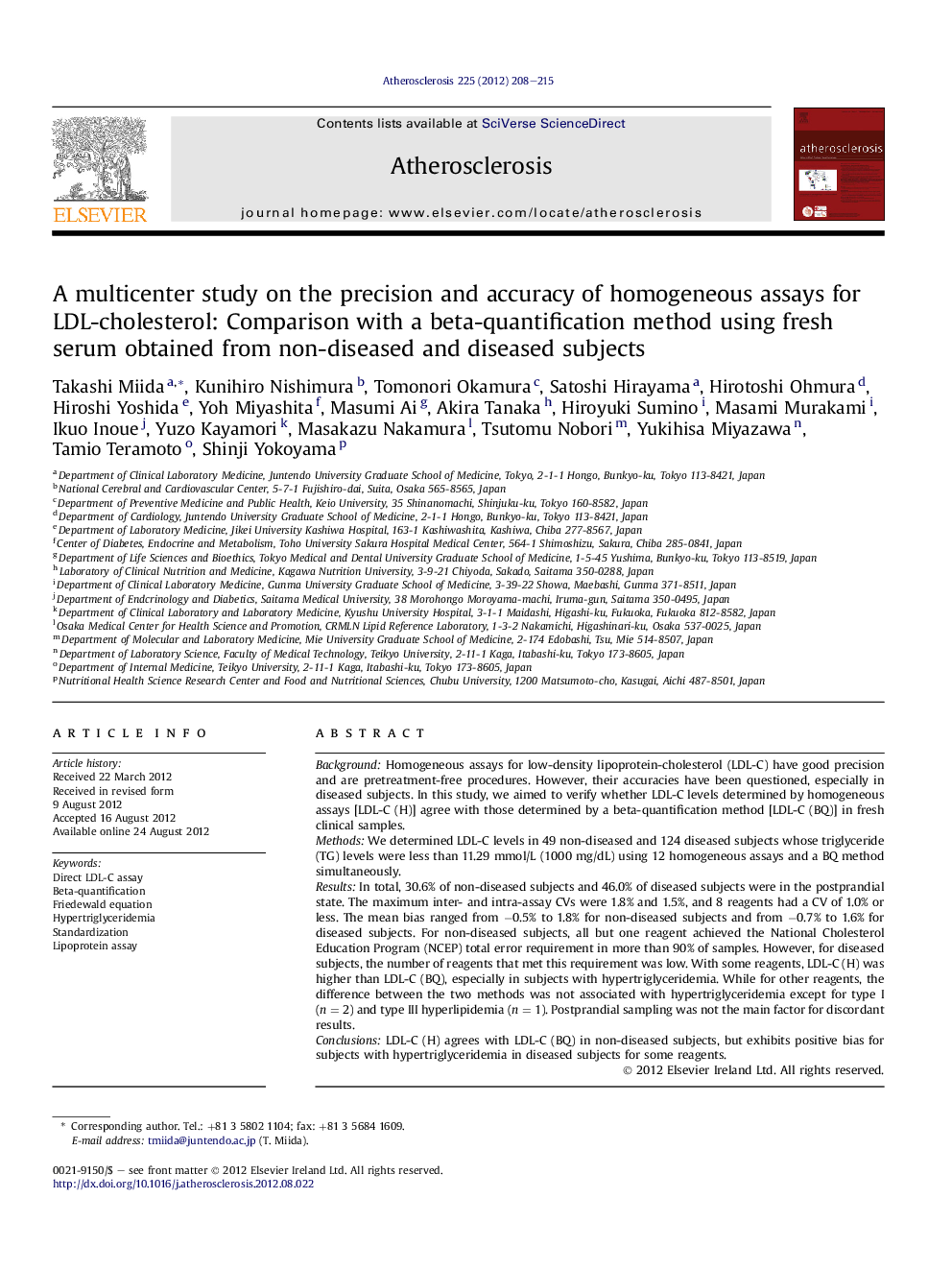| Article ID | Journal | Published Year | Pages | File Type |
|---|---|---|---|---|
| 5948881 | Atherosclerosis | 2012 | 8 Pages |
BackgroundHomogeneous assays for low-density lipoprotein-cholesterol (LDL-C) have good precision and are pretreatment-free procedures. However, their accuracies have been questioned, especially in diseased subjects. In this study, we aimed to verify whether LDL-C levels determined by homogeneous assays [LDL-C (H)] agree with those determined by a beta-quantification method [LDL-C (BQ)] in fresh clinical samples.MethodsWe determined LDL-C levels in 49 non-diseased and 124 diseased subjects whose triglyceride (TG) levels were less than 11.29 mmol/L (1000 mg/dL) using 12 homogeneous assays and a BQ method simultaneously.ResultsIn total, 30.6% of non-diseased subjects and 46.0% of diseased subjects were in the postprandial state. The maximum inter- and intra-assay CVs were 1.8% and 1.5%, and 8 reagents had a CV of 1.0% or less. The mean bias ranged from â0.5% to 1.8% for non-diseased subjects and from â0.7% to 1.6% for diseased subjects. For non-diseased subjects, all but one reagent achieved the National Cholesterol Education Program (NCEP) total error requirement in more than 90% of samples. However, for diseased subjects, the number of reagents that met this requirement was low. With some reagents, LDL-C (H) was higher than LDL-C (BQ), especially in subjects with hypertriglyceridemia. While for other reagents, the difference between the two methods was not associated with hypertriglyceridemia except for type I (n = 2) and type III hyperlipidemia (n = 1). Postprandial sampling was not the main factor for discordant results.ConclusionsLDL-C (H) agrees with LDL-C (BQ) in non-diseased subjects, but exhibits positive bias for subjects with hypertriglyceridemia in diseased subjects for some reagents.
⺠LDL-C was measured by direct assays and beta-quantification method. ⺠In non-diseased subjects, most direct assays showed satisfactory accuracy. ⺠In diseased subjects, some direct assays yielded higher LDL-C than the BQ method. ⺠Hypertriglyceridemia is the main determinant for such discrepancy. ⺠Postprandial sampling had little effects on LDL-C determined by direct assays.
